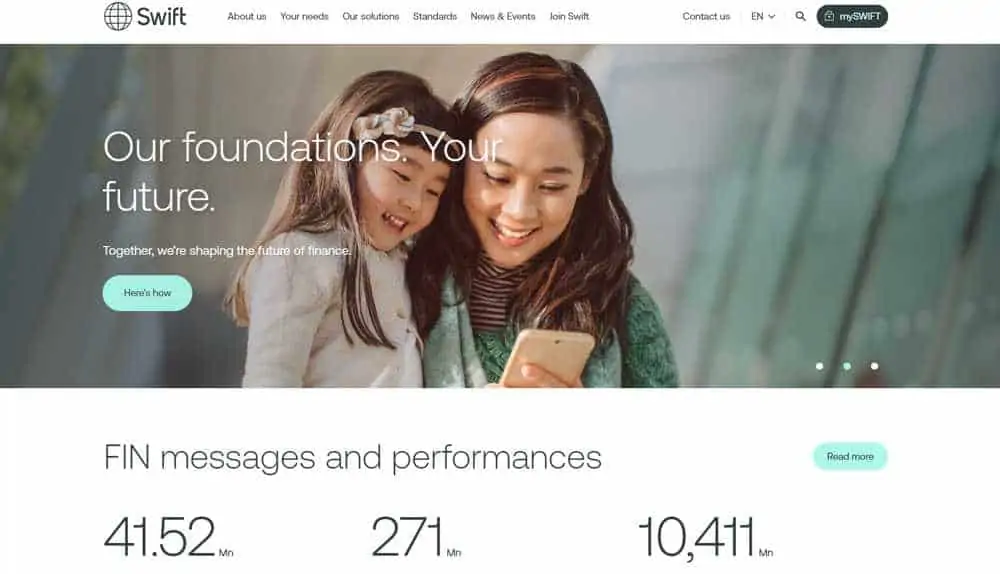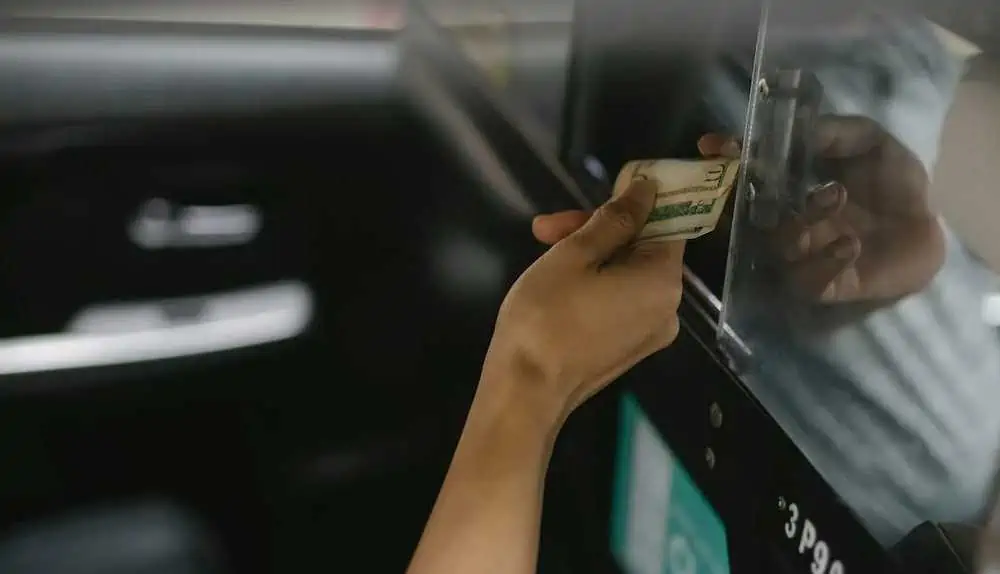Countries have looked for a safe and secure way to transfer money through banks as global trade develops with a swift banking system. An intermediary institution or a network is frequently needed for international transactions to ensure everything proceeds as planned. SWIFT, or The Society for Worldwide Interbank Financial Telecommunications, is what it is known as in Europe.
What is Swift?
Banks employ SWIFT, a secure global messaging system, to conduct international transactions. The network makes it possible for a financial organization to transfer cash to one another, contributing to the seamless operation of international trade.
More than 11,000 financial institutions in more than 200 territories and countries use the bank SWIFT system. The platform received around 40 million messages daily in 2020 instructing the transfer of trillions of dollars, making it the most significant payment network in the world.
Banks can honor payment instructions more quickly because the platform’s messages are secure. It guarantees that financial organizations can manage daily amounts of numerous transactions.
The 1973-founded organization is headquartered in Belgium and is governed by the central banks of Europe, the US, Japan, and Canada.
What is the SWIFT Banking System?
Banks worldwide can communicate safely and quickly regarding cross-border payments thanks to the SWIFT payment.
Banks used the TELEX system for sending wire transfers before the SWIFT network. In addition to operating slowly, TELEX wasn’t a secure yet complicated system required in an era when technology was advancing exponentially. In contrast to SWIFT, the free message format lacked a standard set of codes for identifying institutions and transaction kinds. As a result, there was a great deal of confusion and human mistake. TELEX senders need to describe every transaction in complete words so that a specialized receiver can understand and carry it out. The SWIFT network was created because necessity is the mother of invention.
Established in 1973 in Brussels to create a uniform standard and procedures for financial transactions, the SWIFT system was developed because banks required a standardized method for sending money across international borders. The SWIFT network was the solution to their problem. Six significant international banks established a cooperative organization to manage the workwide network quickly and efficiently.
How Does a SWIFT Payment Work?

The primary idea behind SWIFT was to give banks a faster, more secure means to communicate with one another. Especially concerning handling foreign payments. Since SWIFT is merely a messenger between banks, the word “communicate” is always employed. It transmits the payment instructions message from the issuing bank (the payor) to the remitting bank (the beneficiary/receiver).
Based on an underpinning network of Vostro and Nostro accounts, all banks participating in a SWIFT payment network can transfer money from one account to another. It refers to accounts that banks have established with one another specifically to carry out SWIFT transactions. Here is a complete breakdown of the whole SWIFT transfer process:
- Use your passport and a recent bill to confirm your identity and residence.
- Transfer money to the bank by sending funds there.
- You can accept or reject the bank’s quote for the transfer when it sends it to you.
- Your money is sent to the destination’s currency once you accept the exchange rate.
- You will complete the funds transfer.
How Much Time Does it Take for SWIFT Payments?
The SWIFT network does not provide immediate transfers. A transfer could take one to four working days, depending on the recipient, the time zone, and the banking process. Every transfer must also pass several anti-fraud and anti-money laundering procedures, which lengthens transaction processing time.
The transaction procedure slows significantly if an intermediary bank is required since the receiver and sender organization doesn’t have accounts with each other.
What are the Nostro and Vostro Accounts
The Nostro and Vostro accounts are two mirroring sets of ledgers that are created because both banks maintain track of the money deposited into the account. Vostro is the account name the bank uses to open it in their books, whereas Nostro refers to the account the bank uses to hold money.
The SWIFT transfers are immediate and direct when there is a business link between the two banks, and there are Nostro and Vostro accounts. The SWIFT network must decide the optimal way to transmit the message when banks do not have this kind of relationship. A third party, usually an intermediary bank, is necessary for this situation.
A middleman handles the transaction. The SWIFT transaction can start after a correspondent bank is identified that has a business connection between the two financial institutions. The third-party providers will charge extra costs in this situation. It will cost you more to send money to the more intermediate banks involved in the transaction. Due to the increased number of parties, sending the money will take longer and carry a significantly higher risk.
Information Required for Bank SWIFT System
You must first verify a few details before using SWIFT to conduct an international transaction:
- Recipient’s name
- Recipient’s home address
- Complete information of corporation or bank receiving the funds
- The SWIFT code
- Recipient’s IBAN or account number
How to Find SWIFT Code
You’ll need the bank’s SWIFT or BIC code when sending money overseas. Since this is not confidential information, it is simple to find it online.
On your bank statements, a bank may occasionally list their BIC. If this isn’t the case, it’s typically simple to find on your bank’s website.
Payment and Fees for Swift Payment
The SWIFT Network is a member-owned organization that is supported by yearly dues. Additionally, there are charges for each message delivered over the network. We cannot provide a detailed fee schedule because these fees depend on institutional volume. Member organizations charge their clients for using the SWIFT network when transacting business internationally.
In addition to regular dues and fees, SWIFT generates revenue via business intelligence, serving as a reference point and charging compliance fees. They introduced Global Payments Innovation (GPI), a global monitoring system for international payments, in 2017. GPI has already been accepted by over 3700 organizations, handling more than $300 billion daily.
It adds more than just a new source of income for the SWIFT network with the introduction of SWIFT GPI. It improves cost transparency for participating institutions and makes it possible to follow payments from beginning to end, including payment confirmation from the end user. The technology directly answers the rising demand for speed, security, and pricing transparency worldwide.
Benefits of Bank SWIFT System
International wire transfers can be substantially more expensive than secure SWIFT payments, which are also significantly faster. The network offers member organizations the system for checking and balancing necessary to verify that appropriate accounting standards are met by leveraging the Nostro/Vostro dual ledger system. The financial institution can replicate the system everywhere in the world.
SWIFT is a communications system, not a payment processor; therefore, during ordinary business hours, the network can accommodate more traffic. SWIFT payments can offer trans-continental transfers anytime because multinational companies operate in all time zones. Business partnerships between the US and Europe and the US and Asia can benefit greatly.
The SWIFT Network addressed the global need for fraud prevention and transparency in international money transfers with the 2017 launch of GPI. This provides an extra revenue source for SWIFT, which will assist in keeping them operational, and aids in tracking unauthorized financial transfers for international governments and businesses.
Downsides of the SWIFT Banking System
Many SWIFT clients handle enormous amounts of transactions, making manual insertion of instructions impractical. The production, processing, and transmission of SWIFT messages need to be automated. However, this has a price and higher operational costs.
Even though SWIFT has effectively offered software for automation, it is not without expense. SWIFT may need to dig into these problem areas for its clientele. Automated solutions in this area might generate new revenue for SWIFT and, over time, keep customers interested.
Conclusion
SWIFT still dominates the method for transferring messages worldwide. Its recent expansion into new markets, including business intelligence data and the provision of reporting utilities, demonstrates its desire to keep up its inventive streak. SWIFT appears set to maintain its market dominance in the near midterm and continue to transmit the majority of funds circulating on the planet.

